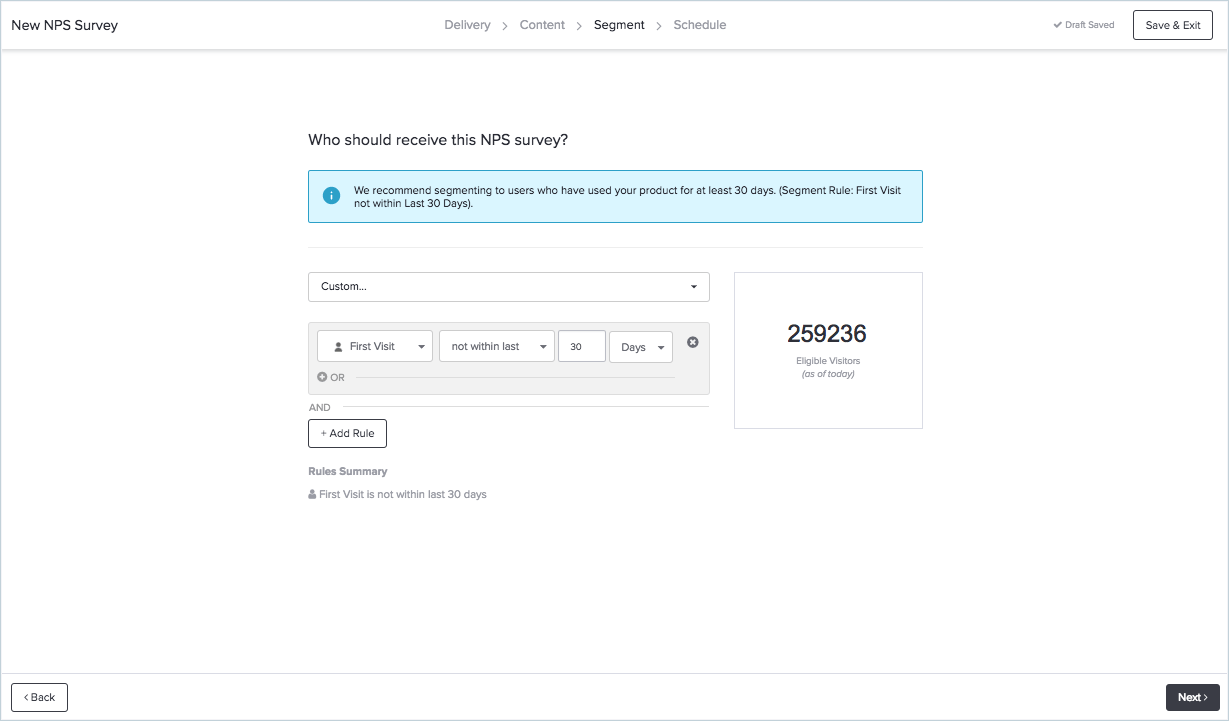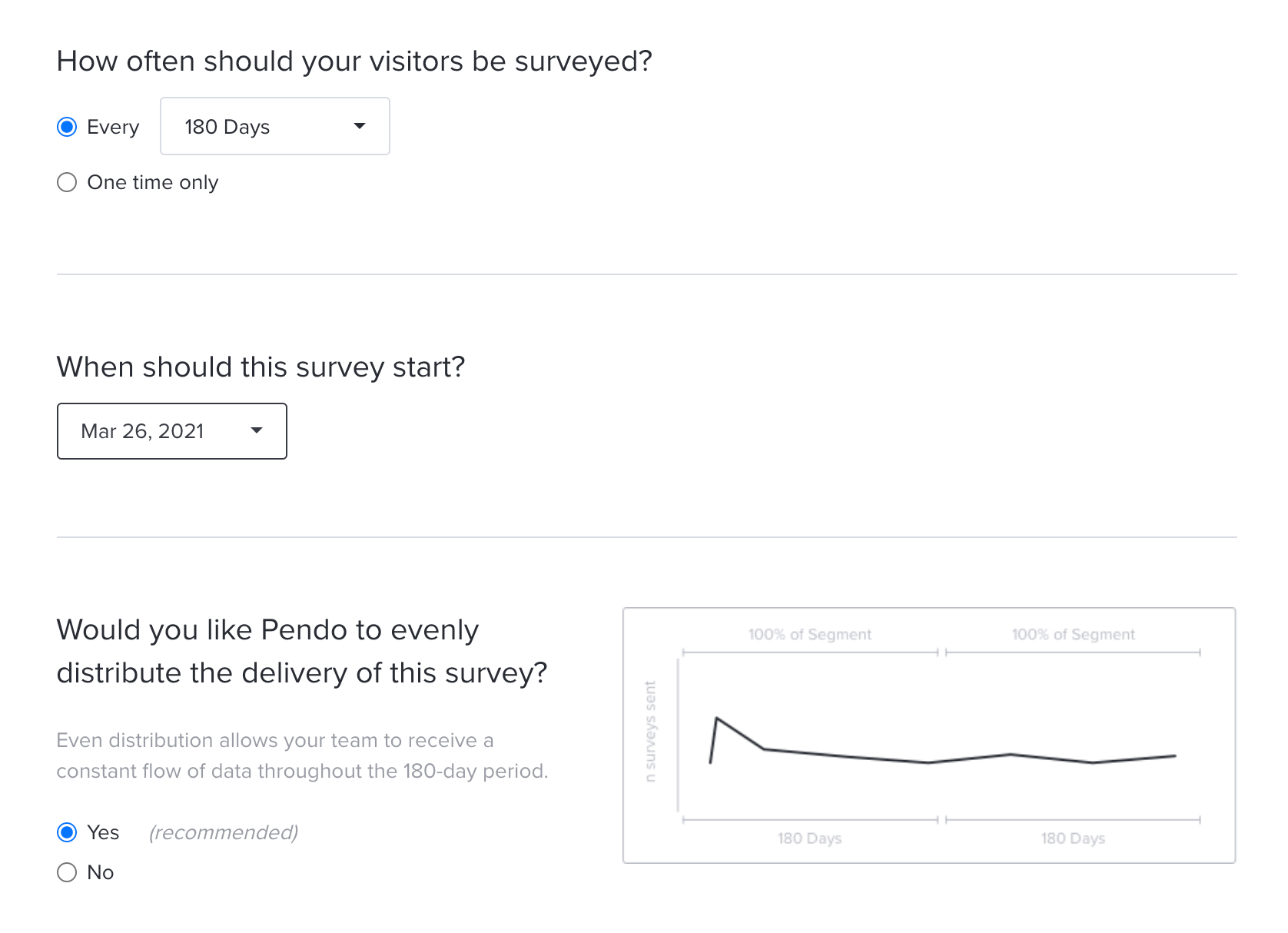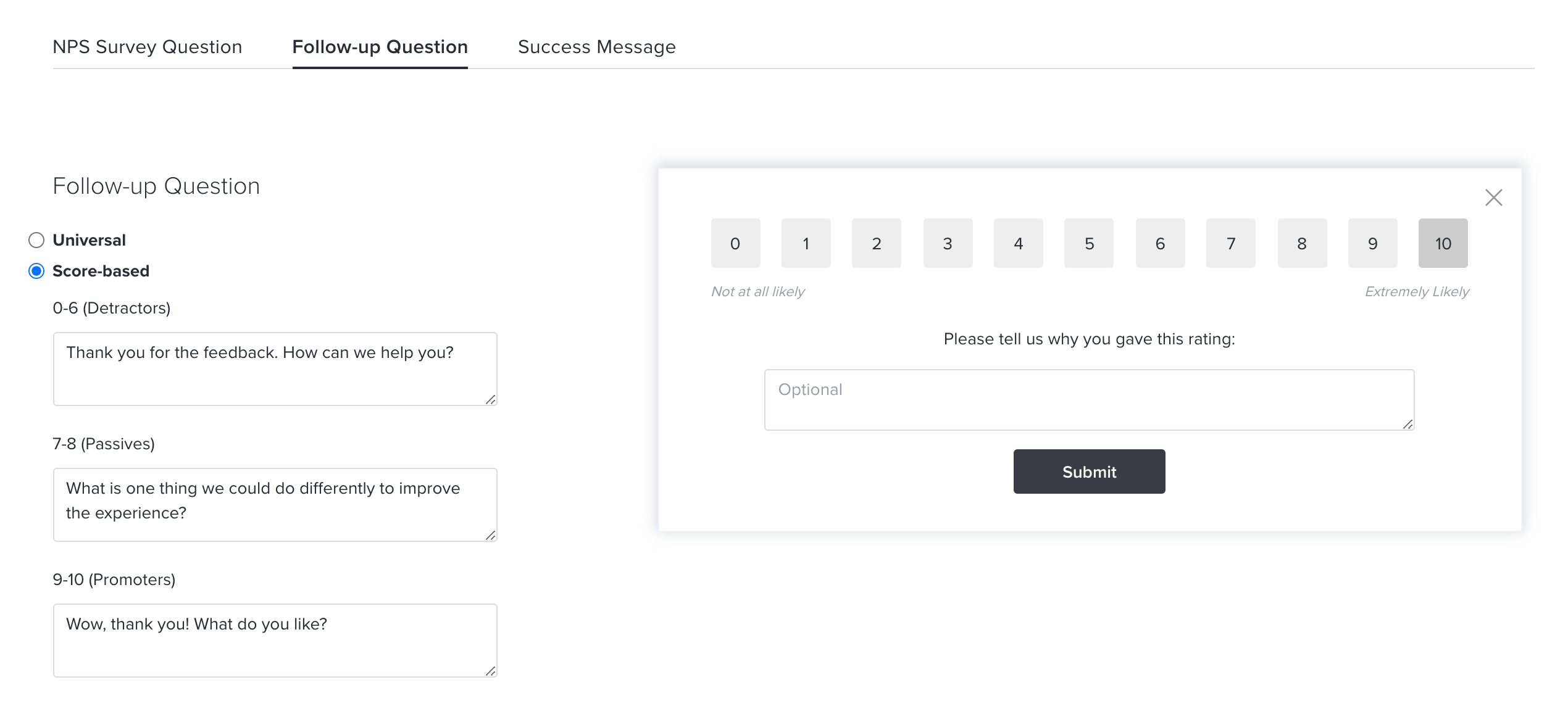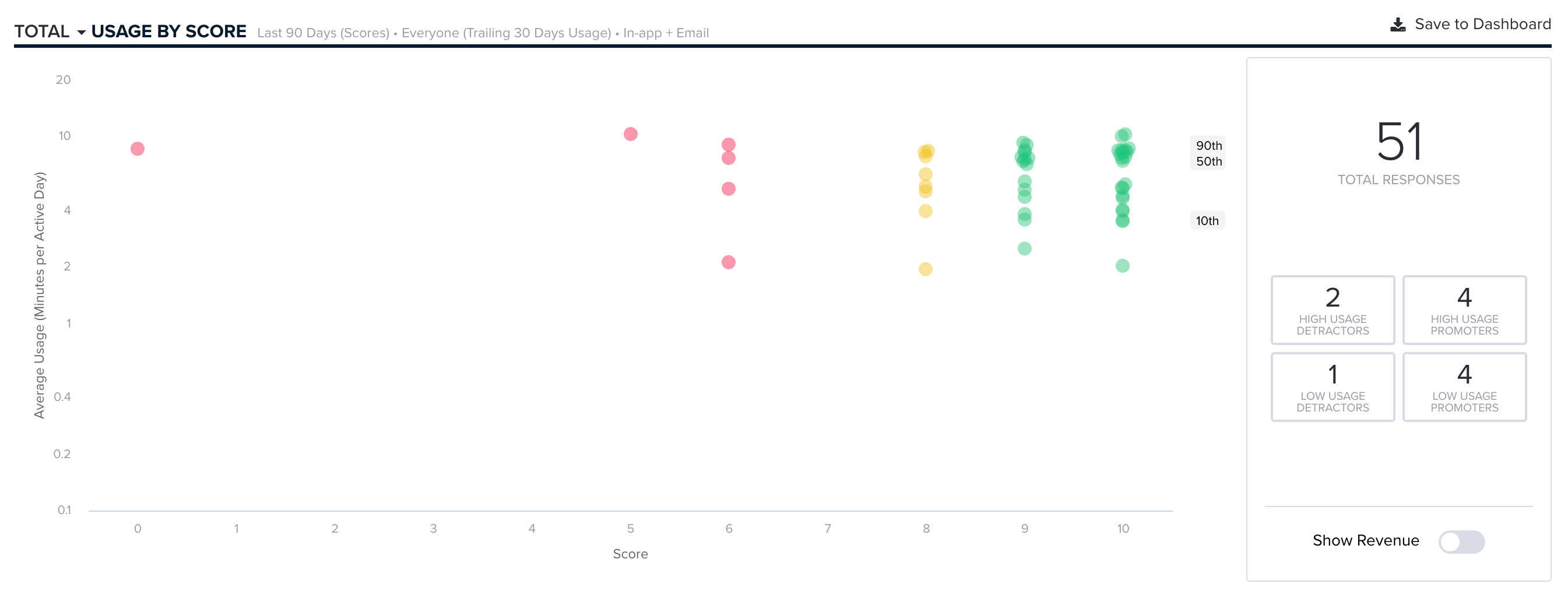While there are many different ways to collect customer feedback and track sentiment, Net Promoter Score (or NPS) has become an industry standard for quantifying how customers feel about products and services. It’s a very simple survey consisting of a single question (“How likely are you to recommend us to a friend or co-worker?) and 11-point scale which allows you to “bucket” users into three groups. Users who score you:
-
- 0 – 6 are your “Detractors”
- 7 – 8 are “Passives”
- 9 – 10 are your “Promoters”
The actual NPS “score” is then calculated by subtracting the percentage of Detractors from the percentage of Promoters, giving you a score from -100 to 100. The same NPS question (shown below) is sent to customers at a frequent cadence, allowing an organization to quantify how customer sentiment changes over time with a single number.

A lot of organizations will also choose to include an open text box that gives customers the opportunity to explain the “why” behind their answer–this is absolute gold for helping customer success and product teams consistently track and improve customer sentiment.
That’s the basics, but here at Pendo we like to give you the true lowdown on how to use NPS effectively to improve your mobile apps. Here are five tips for using NPS to drive mobile app success:
Tip #1: Target the right audience, at the right time
No one likes to be constantly spammed with in-app pop-ups and requests to complete surveys. That’s why you need to approach NPS carefully and ensure that you are targeting the right audience at the right time.
In Pendo, you can segment your NPS surveys based on a whole range of factors from job title and time of first visit to whether a customer uses your iOS or Android app. You can also ensure that users aren’t shown the NPS across web and mobile; you can target them on one platform alone, making sure you aren’t showing someone the same NPS survey twice.

There is no right or wrong set of users to target. Think about what makes sense for your product and organization. For example, at Pendo we split out NPS across web and mobile and track a separate NPS score for our core persona, product managers.

Once you’ve determined your segmentation, choose a cadence that works for you. Sending the NPS survey out on a consistent basis is what allows you to track NPS trends over time.
Tip #2: Drop the generic follow-ups
In addition to targeting the segment of users that makes sense for you, be sure to customize your follow-up questions in your NPS survey, too. Even though NPS is a single question, adding an open text option lets you really get the valuable information from your users. Requesting the “why” behind a score gives users the chance to explain further and in turn helps you respond to their NPS submission more effectively.
For each band of scoring, customize the follow-up to make sure you are giving your users a thoughtful and considered experience.

You can also target users with in-app messages at a later date based on their NPS score. For example, a great mobile use case is asking your Promoters–users who truly love your product–for an iOS or Android app store rating.
Tip #3: NPS is even more powerful when you leverage product usage data
You’ve chosen who to target and your NPS surveys are running. What’s next? As the data comes in, you will see your NPS number in Pendo. This is helpful, but what really allows you to make NPS an actionable piece of data for your organization is when you combine NPS scores with product usage data.

This is where the magic happens. Who wouldn’t want to know which pages and features Detractors and Promoters are using or the difference in scores of people who use your apps a lot versus those who use them very little? When you look at how users in each NPS group navigate and use your apps, you’ll see patterns of behavior and you can take action accordingly.

Maybe your Detractors need a nudge to behaviors that are being taken by your Promoters, or perhaps you need to add a little more support and in-app guidance. Without this data, you’d have no idea–luckily Pendo’s NPS helps take a sentiment score from just being a number to a critical data point that shows you exactly how and where to improve.
Tip #4: Truly close the feedback loop
The second part of any NPS survey is closing the communication loop. No one likes to feel like their valuable feedback has disappeared into a blackhole. This is often forgotten, but is arguably even more important than collecting NPS in the first place.
When you use feedback data and close the loop, you are building a solid relationship and trust with your users. Add a thank you message to the end of your survey and set expectations with your users on what happens next.

You may also want to implement a follow-up process. At Pendo, we have a dedicated Slack channel so everyone in the company can see our NPS responses. This not only builds customer empathy, but it also allows us to act quickly. We know which customer success manager is responsible for each account so they can say thank you, or quickly step in if there is a problem that we can help with.
Tip #5: NPS should be part of a wider voice of the customer program
Finally, remember that NPS surveys should be part of a wider voice of the customer program. It’s just one way to connect with your customers throughout their journey with you, and NPS is enhanced when it’s one measure within a larger program. This way, you’ll have a more complete view of how customers feel about and what they want from your product, allowing you to identify trends and the most impactful courses of action.


